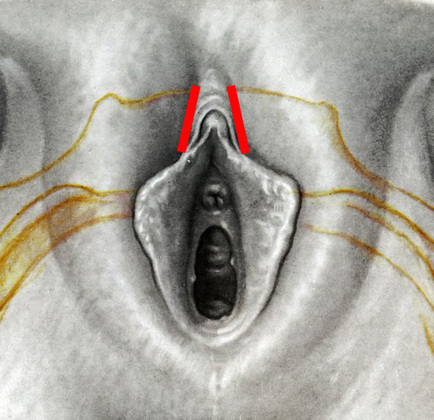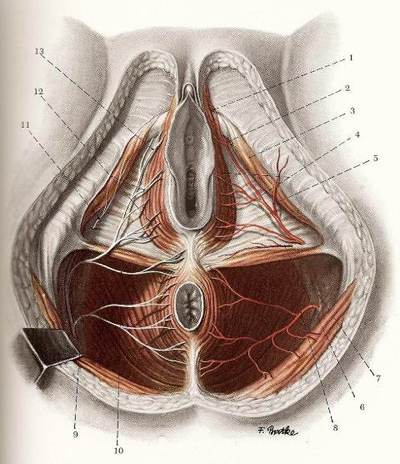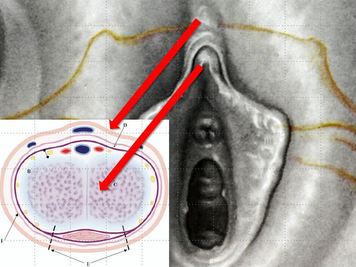|
|

The clitoral hood, also known as the prepuce is layer of loose skin which envelops and protects the clitoral shaft and the head, or glans, of the clitoris from constant and unwanted friction.
Sometimes redundant folds of loose skin unrelated to the body of the clitoris (shaft and glans) develop alongside the lateral borders of the clitoris. This lax tissue may occur on either or both sides of the midline, may fuse with the labia minora and may exceed the clitoral hood in size.
Clitoral hood reduction procedures focus on these lateral folds of loose tissue. The glans clitoridis, the head of the clitoris, is not exposed by this type of surgery. Meticulous superficial dissection and precise incisions which avoid the course of the clitoral nerve supply protect the sensitive nerves which supply this region.
Clitoral hood reduction is usually performed in conjunction with labia minora reduction procedures (reduction labiaplasty, reduction labia minoraplasty, laser reduction labiaplasty). Since both structures are intimately fused, combined treatment of both structures yields better cosmetic flow than isolated treatment of either structure alone.
Sometimes redundant folds of loose skin unrelated to the body of the clitoris (shaft and glans) develop alongside the lateral borders of the clitoris. This lax tissue may occur on either or both sides of the midline, may fuse with the labia minora and may exceed the clitoral hood in size.
Clitoral hood reduction procedures focus on these lateral folds of loose tissue. The glans clitoridis, the head of the clitoris, is not exposed by this type of surgery. Meticulous superficial dissection and precise incisions which avoid the course of the clitoral nerve supply protect the sensitive nerves which supply this region.
Clitoral hood reduction is usually performed in conjunction with labia minora reduction procedures (reduction labiaplasty, reduction labia minoraplasty, laser reduction labiaplasty). Since both structures are intimately fused, combined treatment of both structures yields better cosmetic flow than isolated treatment of either structure alone.
|
|
Anatomy of the Clitoris
|
The clitoris receives its nerve and blood supply from the pudendal nerves and vessels.
These structures emerge from behind bony structures known as the ischial tuberosities - in lay terms, they are called the "sit bones". The pudendal nerves and vessels then course along the muscles beneath the labia majora (the bulbocavernosus muscles) and emerge from the deep tissues within the superfical layers of the clitoral shaft. |
|
The skin of the clitoral hood (top arrow) is formed from the skin of the labia minora. This skin is also know as the prepuce.
The clitoral hood covers the entire shaft and head (glans of the clitoris; bottom arrow). A cross-section view of the clitoris (inset) shows how the nerves (yellow) which provide sensation to the clitoris are not actually in the skin layer, but much deeper in the shaft of the clitoris itself. The structure of the clitoris is identical to that of the penis except for the absence of the urethra. |
Out of Town PatientsMany patients at LVR-NJ travel considerable distances for our expertise in this procedure. We facilitate this process by providing the option of same-day consultation/same-day surgery. This is arranged in advance and by request at the time that you contact our office. Pre-operative bloodwork testing will need to be performed in advance through a local physician or lab near your home. Drs. Pelosi will review your situation to determine if this is an appropriate option. If you fly, or if your drive home is more than 2 hours, we recommend that you stay in the area overnight after your surgery so that Drs. Pelosi can evaluate you for proper healing on the day after surgery; afterwards, you may travel home. In certain situations, we can provide you with an overnight stay the night before your surgery if you are arriving late in the day.
Get travel info: |
Drs Pelosi on Cosmetic Vaginal SurgeryFor Mobile Users
Se Habla Espanol Click to Call Request an appointment online: Ask Drs. Pelosi a question:
Front Office Hours
Monday, Tuesday, Thursday 10:00am - 7:00pm Wednesday, Friday 10:00am - 5:00pm |










